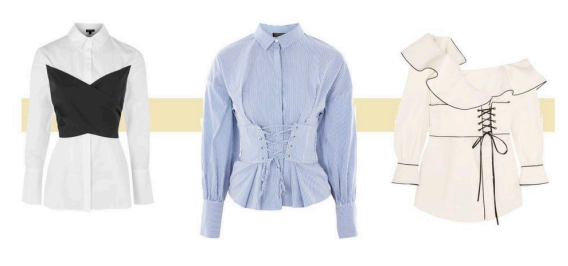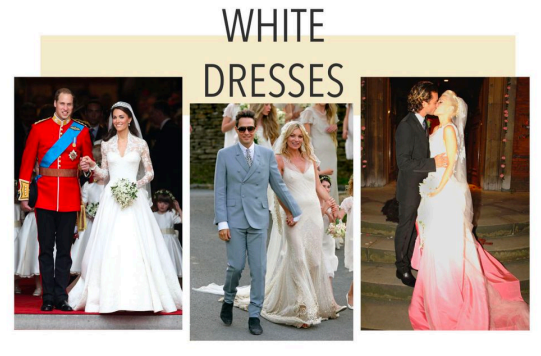The Victorian era was marked by wealth, significant political reform, and wide-scale imperial expansion. The years of British history from 1837 to 1901, known as the Victorian Age, were ruled by Queen Victoria. The expansion of the British Empire during this time period was characterised by a goal of “civilising” the native peoples by introducing the distinctive British form of civilisation. The emergence of a growing middle class of customers as a result of technological innovation had an impact on the time period as well. These middle-class buyers particularly favoured the elaborate yet formal clothing that the 1851 development of the sewing machine made feasible. Rich businesspeople, bankers, teachers, and skilled workers who historically had their attire custom-made tried to emulate the behaviour and attire expectations set by the upper class.
Victorian clothing was always adorned with elaborate collars, hats with elaborate trim, lace, and intricate edgings. The beautiful tailoring of the men’s clothes perfectly captures the grandeur and variety of men’s nineteenth-century attire. They wore dark coloured, simple clean silhouettes. Stove-pipe pants, a regular shirt, and either a vest or a waistcoat made up a daily ensemble. Men used to dress in corsets similar to what Victorian women wore before the waistcoat became popular. From the complex pattern on women’s corsets to the pleating of their gowns, women’s apparel showcased a wonderful spectrum of colours and needlework details.A new transition from the Romantic era of fashion began in 1836. Huge Gignot sleeves abruptly became slimmer, and a seam line plummeted dresses’ shoulders. A closely fitted, generally V-shaped bodice was boned and tilted to highlight the waist. The skirt’s volume was increased by the waist’s absence of bulk thanks to cartridge pleats. Because of the constrictive corsets and dropped shoulder lines, women of higher social classes were assumed to be subdued and passive. While kids used to dress in adult fashion for a while, they soon developed their own fashion sense in order to find comfortable and pleasurable clothing.Regardless of age or gender, every Victorian appearance was one of grace and elegance with a dash of cosiness.

In a time when athleisure and carefree style rule supreme, the richness of Victorian velvets may appear out of place, but two centuries later, its stylistic elements are returned. Nearly 200 years later, the corset has taken on a somewhat different shape but is still a hallmark of contemporary fashion. Corsetry was one of the key highlights in the designers’ collections. Consider the renowned Rococo-painted corsets by Vivienne Westwood and the conical Jean Paul Gaultier corset worn by Madonna in 1990. While Alexander McQueen, Vivienne Westwood, and Rodarte continue to make references to gothic romance in their designs season after season, Alberta Ferretti, Valentino, and Erdem presented Autumn-Winter17 collections with elements of the Victorian Era, featuring detailed blouses, rich deep velvet fabrics, and lace up boots.
Steampunk clothing, which incorporates many of the Victorian forms and fashions with metal, leather, goggles, and gears, has grown in popularity over the past several decades.Queen Victoria loved jewellery, pairing sapphire and diamond brooches with individual pieces she had gathered throughout the course of her reign. Supersized jewellery with Victorian influences has been spotted on the catwalk. While Dolce & Gabbana is known for itsreligious imagery and gem-encrusted jewellery, Ricardo Tisci’s SS12 couture design for Givenchy decked models with crystal-encrusted septum rings and collarbone-skimming earrings, revisiting same styles in jet for Autumn-Winter15.

Queen Victoria’s decision to wear a white silk satin gown at a time when most brides were dressed in coloured gowns wasn’t intended to alter bridal fashion for years to come. The virginal colour was chosen not to symbolise purity but rather to highlight Victoria’s Honiton lace trim’s fine craftsmanship and detail, which would help the suffering lace industry. Since then, royal or not, white wedding gowns have evolved into an iconic look for brides of all backgrounds. Consider the custom Alexander McQueen that Kate Middleton wore to marry Prince William or Gwen Stefani’s 2002 pink-dipped wedding gown for her take on the style.
Rich is the best way to sum up Queen Victoria’s outfit. Her dresses, blouses, and skirts were fastened with pearl buttons and gemstone brooches. Her silk and satin evening gowns were decorated with lace and velvet. Bold magenta, electric blue, and flamboyant yellow were some of the other vibrant hues that emerged with the invention of synthetic dyes in 1860.
It was not surprising to see Balenciaga, Saint Laurent, and Valentino embrace opulent Victorian textures for their AW17 designs since tactile materials are nothing new for the fall season. At Erdem, the fabric took on a moodier turn as the designer adorned his magnificent collection with plush velvets, melancholy lace, and lavish embroidery.
In part because to ITV’s Victoria, ruffled blouses and lace-up boots are experiencing a comeback in 2017. Jenna Coleman swans around Buckingham Palace in the grandiose drama while wearing lavish gowns, luscious lace, and priceless jewellery. The popular Netflix series Bridgerton had a significant impact on fashion. Because of its fictionalised, fantastical depiction of Victorian era life, essentials like empire waist dresses, corset tops, and even opera gloves have risen to the top of our wish list for the ideal wardrobe.

Fast fashion companies like Zara and Gap have adapted Victorian styles after being inspired by Victoria, helping to popularise the look among general consumers.
References
https://www.elle.com/uk/fashion/trends/longform/a37764/victorian-fashion-influence-today/
https://www.purewow.com/fashion/bridgerton-fashion-trends
https://www.historic-uk.com/CultureUK/Victorian-Fashion/
https://editions.covecollective.org/chronologies/womena-fashion-victorian-era
http://www.vam.ac.uk/page/0-9/19th-century-fashion/


